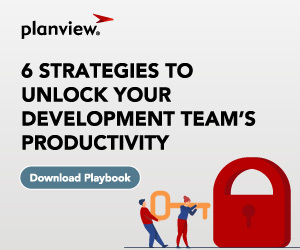
It can be easy to fixate on tracking any number of metrics throughout the software delivery process, from story points delivered, to commits per project, to build success rate.
However, while there’s value in monitoring the performance of specific activities like these, it’s essential to prioritize the outcome of your work—not just steps within the process.
That’s where Flow Metrics come into play. As part of Planview CTO Dr. Mik Kersten’s Flow Framework, these metrics allow teams to measure their rate of business value delivery, improve their processes, and ultimately deliver greater value on a continual basis.
Especially when starting out, it can take a while to understand and fully reap the benefits of Flow Metrics. Dominica DeGrandis, Principal Flow Advisor at Planview, is well-versed in working with teams to effect significant improvements as quickly as possible using Flow Metrics.
In this video case study, DeGrandis explains how one team used Flow Metrics to optimize their processes and improve their workflow.
Below is a recap of her insights.
Identify the Bottlenecks
When utilized properly, Flow Metrics can enable enterprises to unlock business value and achieve significant impact in a short amount of time. DeGrandis worked with one team in particular that made substantial achievements in just two months.
They did it by identifying and addressing their bottlenecks, i.e., analyzing work sitting in a wait state or idle in an active state. They discovered that these states also became the states with the highest artifact count.
When work arrived in this part of the value stream, it sat in a definition state and then in a blocked state. They knew something was standing in the way of the work moving forward, so they took a closer look.
Ask the Right Questions
Using Planview Viz’s bottleneck finder, the team was able to pinpoint bottlenecks in the process, such as:
- Resource scarcity
- Lack of automation (e.g., CI/CD pipelines, testing)
- Process timing (e.g., funding approvals, end-to-end testing, waiting for change approval)
- Dependencies
By sorting their work items by highest duration, they could find the states where work was sitting the longest. Right away, they saw they had a lot of work blocked by security scans.
They knew they needed to resolve this issue to move the items through the process faster. Knowledge work is perishable—the longer the wait to finish a thought process, the higher the probability of forgetting details and needing to start again. So they needed to find a way to remove the bottleneck.
They spoke with the teams involved in the security scans to see if they could find an answer.
Team Collaboration as the Way Forward
They discovered that multiple teams had the ability to run the scans, so they set about deciding which was the best team to run them from a capacity perspective. This team could make the reports available as quickly as possible to the people that needed them.
Then, they asked the chosen team whether they could run the scans before a team pulled the item into their iterations. That way, instead of starting work on a story and waiting days on a security report, the developers could begin immediately.
The chosen team agreed to make the reports available at the beginning of the developer’s iteration, allowing them to study any vulnerabilities and resolve them right from the start of the work.
The organization expects this change to reduce Flow Time and increase its throughput for multiple teams across the business. Having captured duration and Flow Time for iterations prior to the change, they will be able to easily compare it to those metrics in future iterations.
Key Takeaways
A process is only as good as the value it creates for your enterprise. By analyzing their work using Flow Metrics, this team was able to deliver their work more efficiently for their organization.
Flow Metrics can unlock data-driven improvements to your business work. It is essential in today’s work environment that teams learn how to drive, not just monitor, value throughout the software delivery process.
Watch DeGrandis’s video, where she shares her full insights and explains how to get the most out of Flow Metrics.




